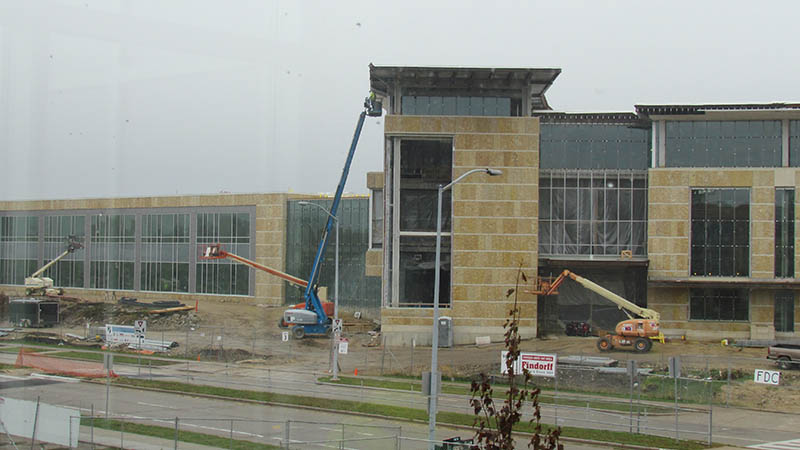10-year facilities plan to be presented this fall
Madison College’s Facilities Planning Investment Council will present its new 10-year facility plan this fall. The previous 10-year plan included the development of the Gateway and Ingenuity Center and renovation of student spaces at the Truax Campus.
September 12, 2018
With over a year of strategic collaboration, the Facilities Planning Investment Council will be presenting to the college community, including the Board of Trustees, the final Facilities Master Plan this fall.
This comprehensive and adaptable plan, with a breadth that spans 10 years into the future and has several phases, is a “program-driven framework that aims to anticipate and solve long-term facility needs,” according to Katrina Willis, a Student Senate representative on the council.
In order to identify projects, the Facilities Council spent over a year communicating with college stakeholders (faculty, staff, administration, and students) across all districts, buildings, locations, and college groups. By the end, there were more than 550 projects recognized during this process.
The council also sought to identify strategic targets, which include: responding to changing needs, maximizing facility utilization, considering current and projected demographics, and promoting strategies for environmental sustainability.
Teresa Werhane, a Facilities Council representative, said, during a presentation, “three months were spent developing a system for prioritizing these projects” that were brought to light by stakeholders. This system included researching best practices at other colleges and utilizing the existing prioritization processes at Madison College.
Ann Camillo, FPIC Facilitator, said, during the same presentation, that “after months of research, the Facilities Council developed guiding principles to represent the needs of all college stakeholders.”
To address these needs, the Council’s laid out these “guiding principles.” The first guiding principle of the Facilities Master Plan is set to recognize “physical environments and how current facilities affect learning and student achievement.”
Secondly, the Facilities Master Plan will “identify trends and provide for future needs.”
Thirdly, the Facilities Master Plan will “address emerging opportunities and flexible use of indoor and outdoor areas.”
Fourthly, the Facilities Master Plan will “protect taxpayers’ investments, by which the plan is set to account for maintenance, repairs, and renovations, with the aim to extend the life of all college facilities.”
And lastly, the plan will “ensure the health and safety of all people on campuses (it will support safety and security through best practices in design, construction, maintenance, operations, and compliance with building codes).”
For more information, you can find this information on the Madison College website, madisoncollege.edu.
“The Facilities Master Plan is committed to increasing access to education, and prioritizing projects that increase student access to education, as well,” said Steven Ansorge, current Student Senate President and a Facilities Council student representative.
He adds, “the Facilities Master Plan is academically driven and coordinated with the current Academic Plan and Student Services Plan.” In addition, the FMP aims to prioritize the environment through sustainability initiatives on every college property, though projects that meet or exceed LEED silver standards.
Kathy Waters, a Facilities Council Representative, stated that certain overarching themes arose during the planning process.
• Flexibility: the demand to serve a diverse set of needs, specifically that any given room can act in several different capacities to bolster improved utilization.
• Existing Spaces: although there was no demand identified for new facilities, it was recognized that there is a need to utilize existing spaces the college currently has for current and future needs.
• Collaboration: it was identified that industries need to work together, specifically between the College, Makerspace, and Entrepreneurship Center.
• Technology and Innovation: the college is currently training students for careers that “don’t even exist yet”. For this reason, the college keeps an eye on industries and having spaces within that can change as quickly as those industries.
Mike Stark, Council Co-Chair, says that in the first two years of the 10-year plan programs from the closing Downtown Campus, and the opening of the new South Goodman Campus, will take many resources that the Facilities Master Plan addresses. In the plan, strategic projects are also laid out, including renovations to the bookstore in the summer of 2019.































